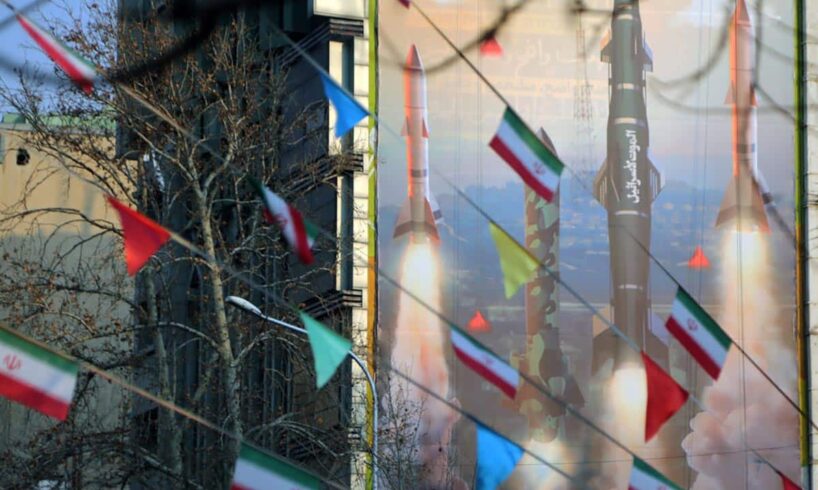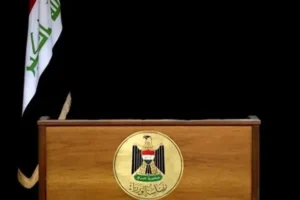
Just five months after Israel and Iran clashed, the two countries may be on the brink of war again.
What’s causing these new tensions, and what could happen next?
The June war
In June, Israel launched a surprise attack on Iran, striking nuclear and missile facilities across the country. Iran responded with barrages of missiles and drones on Israeli cities. After 12 days of fighting, 31 Israelis had been killed, and thousands were wounded. In Iran, over 1,000 people were reported killed, and thousands were wounded.
The strikes came as, according to Israel, Iran had taken unprecedented steps toward expanding its ballistic missile program and weaponizing enriched uranium. These developments reportedly brought Iran just weeks away from building a nuclear bomb.
Additionally, for years, Iran had built up Hezbollah in Lebanon and other terrorist groups across the Middle East, partially to serve as a deterrent to prevent Israel from launching attacks on Iran. However, during 2024, Israel eliminated most of Hezbollah’s senior leadership and destroyed much of its weapons and infrastructure. Iran also lost its main overland link to Hezbollah in December 2024, after the Syrian President Bashar al-Assad was deposed and the new regime took an anti-Iran stance.
With Iran nearing dangerous milestones and its shield of proxies heavily damaged, Israel decided it was now or never. Any delay would have severely inhibited Israel’s ability to hit the threats posed by Iran.
Iranian missile and nuclear sites were heavily damaged, both from Israeli airstrikes and from drone attacks and sabotage conducted by agents on the ground within Iran.
Two days before a ceasefire was reached, the United States joined the war, launching strikes on Iranian nuclear facilities in Fordow, Natanz, and Isfahan. Iran responded with a barrage of missiles on a U.S. base in Qatar. All the missiles were intercepted.
Iran is rebuilding its nuclear program
While Israel and the U.S. at first insisted that Iran’s nuclear and missile program had been effectively destroyed, those assessments were toned down somewhat as more information was revealed.
Since the war, Iran has been steadily working to rebuild its nuclear and missile programs. On Sunday, Iranian President Masoud Pezeshkian insisted that Iran would rebuild its nuclear sites “stronger than before,” adding that the country still had the knowledge needed to keep its nuclear program running.
Satellite imagery has revealed efforts by Iran to reinforce surviving facilities to protect itself from future attacks. Iran has also intensified work on a previously unused facility located deep within a mountain to protect it from airstrikes. The exact purpose of the facility remains unclear.
Satellite imagery taken by Maxar, now Vantor, and Airbus at the end of September and early October shows activity at the Esfahan tunnel entrances. As of September 26, the second of three entrances (the middle entrance) which was previously blocked by earth and rubble has been… pic.twitter.com/PskgRPfoRz
— Inst for Science (@TheGoodISIS) October 16, 2025
Construction was also spotted at a site that has been linked to Iran’s nuclear weapons program, although the exact purpose of the new buildings remains unclear.
As we continue to study Taleghan 2, we increasingly think that the reconstructed Taleghan 2 facility may be designed for blast mitigation in the event of any aerial attacks, using what is known as a “blast trap.” The attached very simple sketch shows the layout of the two side… pic.twitter.com/tnZuxnWNMT
— David Albright (@DAVIDHALBRIGHT1) October 21, 2025
No one is quite sure how many centrifuges Iran still has, nor where they’re being kept. It’s also unclear where Iran moved its existing uranium stockpiles to or if it’s taken any significant steps towards bringing this uranium to weapons-grade levels of enrichment. Even with a relatively small number of centrifuges, Iran could slowly process this uranium to weapons-grade levels of enrichment and produce enough material for about eight to 11 nuclear weapons.
In an August interview with i24News, Israeli Prime Minister Benjamin Netanyahu acknowledged that Iran still has 400kg of highly enriched uranium that was unaccounted for after the war. He said that Israel “knew from the beginning that [this uranium] wouldn’t be hit.” Netanyahu added, however, that the strikes set back Iran’s nuclear program by a “good number of years.”
Additionally, earlier this week, The New York Times reported that Iran has ratcheted up its missile production efforts and hopes to fire 2,000 missiles in one big barrage in any future conflict with Israel.
Ali Vaez, the Iran project director at the International Crisis Group, noted to the Times that while there are no concrete signs that a new attack is imminent, “Israel feels the job is unfinished and sees no reason not to resume the conflict, so Iran is doubling down preparedness for the next round.”
Iran has also reportedly been working to rebuild its proxies across the region.
Israel’s KAN national broadcaster reported last week that Iran is focusing on arming militias it backs in Iraq in preparation for a future conflict with Israel. During the war in June, Iran-backed militias in Iraq stayed out of the conflict.
Additionally, last week, Iraqi Foreign Minister Thabit al-Abbasi said that he was warned by U.S. Defense Secretary Pete Hegseth that the U.S. was planning imminent operations in the region and that Iraq should make sure that the Iran-backed factions don’t interfere. Abbasi added that Hegseth said, “This is your final warning…and you know very well how the current administration will respond.”
A new escalation took place on Friday, when Iranian forces seized the Marshall Islands-flagged oil tanker Talara in the Gulf of Oman and drove it into Iranian waters. While this is the first such seizure in several months, Iran has regularly seized oil tankers in the Persian Gulf, usually alleging the vessels were smuggling oil illegally.
Efforts to reach a new nuclear deal stall
In the months leading up to the war, the U.S. and European powers tried to get Iran to agree to a new nuclear deal. The U.S. withdrew from the old nuclear deal, known as the JCPOA, in 2018, insisting that a better deal could be reached. U.S. President Donald Trump, who was in his first term at the time, argued that the JCPOA enriched Iran, giving it money to fund terrorism around the world, and demanded a new agreement be signed. In the years since, Iran significantly expanded its nuclear program.
After the war, the U.S. said it still wanted to reach a deal, but no progress has been made since. Part of the issue is that the U.S. wants any agreement to end all uranium enrichment in Iran, while Iran sees that as a non-starter.
In the meantime, Iran has also mostly ended cooperation with the UN’s nuclear watchdog, the IAEA, blocking inspectors from most of their facilities. This has severely inhibited the international community’s ability to understand how much was destroyed in the war and how much Iran has rebuilt since.
Even before the war, observers found signs of possible issues – such as traces of highly enriched uranium in places where it shouldn’t have been present – which Iran has failed to explain. There were also several facilities that inspectors weren’t allowed into, even before the war, and many analysts believe Iran could have other secret facilities hidden around the country.
In September, as efforts to reach a new deal remained stalled, European states reinstated heavy sanctions that had been lifted from Iran as part of the JCPOA. In October, Iran announced officially that it was no longer bound by the JCPOA.
Iran’s water crisis
Simultaneously, as tensions around Iran’s nuclear and missile programs intensify, it is also dealing with a severe water crisis. In several major cities across the country, water supplies are running out, and authorities are implementing cuts and restrictions on the public.
Earlier this month, Pezeshkian warned that if rain doesn’t fall soon, Iran’s capital, Tehran, will need to start rationing water and may even need to be evacuated.
The crisis has been caused partially by the worst drought Iran has experienced in over 60 years, but the problems have been exacerbated by decades of government mismanagement of water infrastructure.
The crisis has Iranian leaders on edge as it comes just as new sanctions are worsening the country’s already difficult economic situation, and just months after the losses caused by the war with Israel. The growing pressure could spark civil unrest.
Iran has faced water crises before, and those shortages have often sparked waves of protests, including in 2018 and in 2021. However, these crises mainly affected certain regions in Iran’s periphery. This time, the water emergency is hitting many major cities across the country, including the capital.
On Sunday, a small protest was reportedly held by students at Tehran’s Al-Zahra University in light of the water shortages. According to the report, the university’s bathroom water supplies have been restricted to just two hours a day, and drinking water is distributed in bottles.
آغاز اعتراض دانشجویان به تداوم بحران آب در دانشگاهها
به گزارش #خبرنامه_امیرکبیر، در پی تداوم قطع و جیرهبندی آب در خوابگاههای دانشگاه الزهرا، جمعی از دانشجویان این دانشگاه شامگاه یکشنبه (۱۸ آبان ۱۴۰۴) دست به تجمع اعتراضی زدند.
دانشجویان با سر دادن شعارهایی از جمله «ما منتظر… pic.twitter.com/Bi2yH7eoLP
— Amirkabir NewsLetter خبرنامهٔ امیرکبیر (@autnews_org) November 10, 2025
Additionally, on Thursday, two men in military uniforms were seen raising the sun and lion flag, which was used by the Pahlavi monarchy, which was overthrown by the current regime in Iran in 1979. The son of the last Pahlavi king, Reza Pahlavi, has intensified efforts to spark regime change in Iran in recent years. However, he’s stressed that he has no interest in restoring his family to the monarchy.
دو ارتشی در مترو تهران پرچم شیر و خورشید را برافراشتند
در یک رویداد بیسابقه دو نظامی با یونیفرم روز چهارشنبه ۲۱ آبانماه ۱۴۰۴ در ایستگاه مترو «خمینی» تهران پرچم شیر و خورشید را برافراشتند.
شماری از ناظران ابتدا فکر کردند دوربین مخفی و از نمایشهای تبلیغاتی حکومت است اما ماجرا… pic.twitter.com/SKlVJw5tXi
— KayhanLondon کیهان لندن (@KayhanLondon) November 12, 2025
In recent weeks, an X account named Mossad Farsi, which is reportedly linked to the Mossad itself, has put a spotlight on the water crisis and corruption in the Iranian regime.
Since the account’s establishment shortly after the war, it has regularly posted content ridiculing the regime in Iran and joking about the Mossad’s presence in the country. The account has also occasionally published posts claiming to have insider information about military appointments and political scandals in Iran.
On Saturday, the account posted, “Good evening to the residents of Tehran! You will likely be forced to evacuate the city in the next two weeks due to water shortages. Shame and failure of the leader – the result of years of neglect. We remind all our agents in Greater Tehran – Do not forget to take your communication systems with you and act according to Code 3.”
As reports about the water crisis and Iran’s efforts to rebuild its nuclear and missile program spread, an unnamed senior Israeli official told KAN on Monday that Israel needs to set a goal of overthrowing the Ayatollah’s regime by the end of Trump’s term. Israel took some steps to destabilize the regime during the war, but stopped short of forcibly trying to topple the regime. These steps included a strike that hit a guard post at the notorious Evin Prison in Tehran, where political dissidents are held, as well as strikes on Iran’s main state broadcaster.





